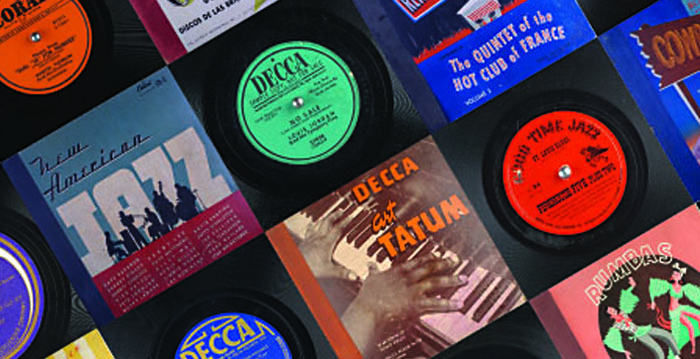The following guest post from audio preservation expert George Blood is part of our Vanishing Culture series, highlighting the power and importance of preservation in our digital age.
On 78s
Thomas Edison produces the first machine that can record and playback sound in 1877. The flat disc is first patented in 1888. The concept is very simple: a sound wave is captured on the record as a physical wave in the disc, most often shellac (the shell of the lac beetle). Most discs spin at approximately 78 rpm, hence the name 78s. Other speeds, such as 80, 90 and 100 rpm are not uncommon. In addition to speed, the equalization and stylus size varies – either to improve the sound or to dodge someone else’s patent. In the 1950s they slowly give way to the LP or microgroove record, though in some parts of the world they remain common well into the 1960s.
Why is it important to preserve 78rpm discs?
The cultural record of the 20th century is different from all other periods of human history by the presence of audiovisual recordings. Prior to 1877, there was no way to record the sound of a nursery rhyme being read at bedtime, a musical or theatrical performance, or the world around us. During the ensuing 147 years, formats came and went as technology and preferences changed. Yet for nearly half that time, 78rpm discs were the way we learned about each other and entertained the world. It was a time when the world became a much smaller place. The invention of the automobile and the airplane, the expansion of the railroads, the telephone and radio, to the dawn of the space age, 78s were there. Through 78s, we could hear traditional music from Hawaii long before it was a state. American popular music – jazz, fox trot, big bands, even the Beatles – spread out across the globe, well ahead of Hollywood, and long before television. A thousand people might attend a concert, a theater performance, a speech, or a dramatic reading by Charles Dickens. With the 78, it became possible for those experiences to be shared and repeated, and spread far and wide, not once and done.
The period of 78s doesn’t just parallel other historical developments. The sounds on 78s document cultural norms, performance practices, tastes, and the interests of people who, after centuries of drudgery and lives spent in the fields and hard labor, finally had free time. My mother liked to remind me that nothing tells you more about a person than what makes them laugh. The comedy routines and lyrics give us a window into a time when groups of people were preyed upon, disparaged, and disrespected in stereotypes and bigotry, which shines a mirror on how we can still do better to our fellow beings. We hear the buoyant sounds of the roaring ‘20s, a happy, hopeful time, of liberation and greed. Music borne of the heavy hand of oppression and poverty that conveys gospel, blues, and gives us jazz—all quintessentially American. On 78s, we can hear and learn of the other peoples of the world: of ragas and gamalans, performers who do not traverse great oceans, the cultures of foreign lands we could only read about. We can feel the despondency of the Great Depression in the songs that empathize with the struggles of a nation. Through 78s we can hear firsthand accounts of the attack on Pearl Harbor, the angry, vile speeches of dictators, the songs that inspired a once divided nation to pull together in a common cause against evil, to fight for peace for our time, for days that will live in infamy. Bursting out of the war to end all wars, big bands, swing, then rock n’ roll. It makes one long to hear Bach play the organ, Mozart play the piano, Paganini play the violin, or Orpheus beg for the turn of Euridice, and know, that if we preserved these 78rpm recordings, future generations will understand our joys and pains, to have a window, through sound, into the arc of history, the slow advance of progress of the human condition.
To remember half of recorded history, it is important to preserve 78rpm discs.
About the author
George Blood is an expert in the audio and video preservation industry.

